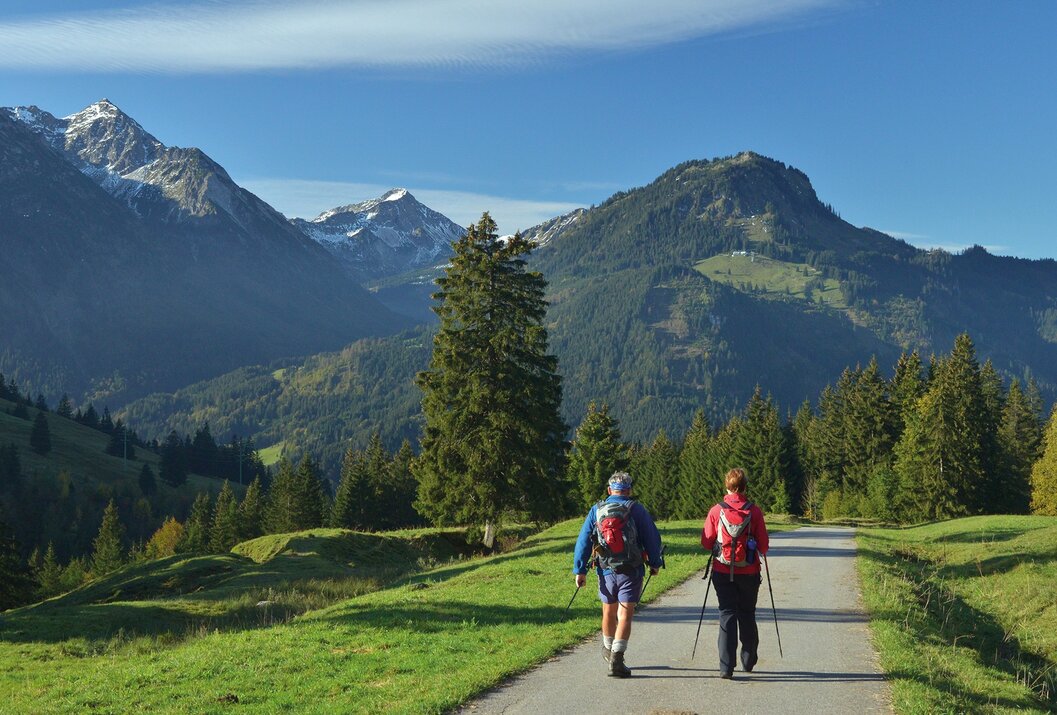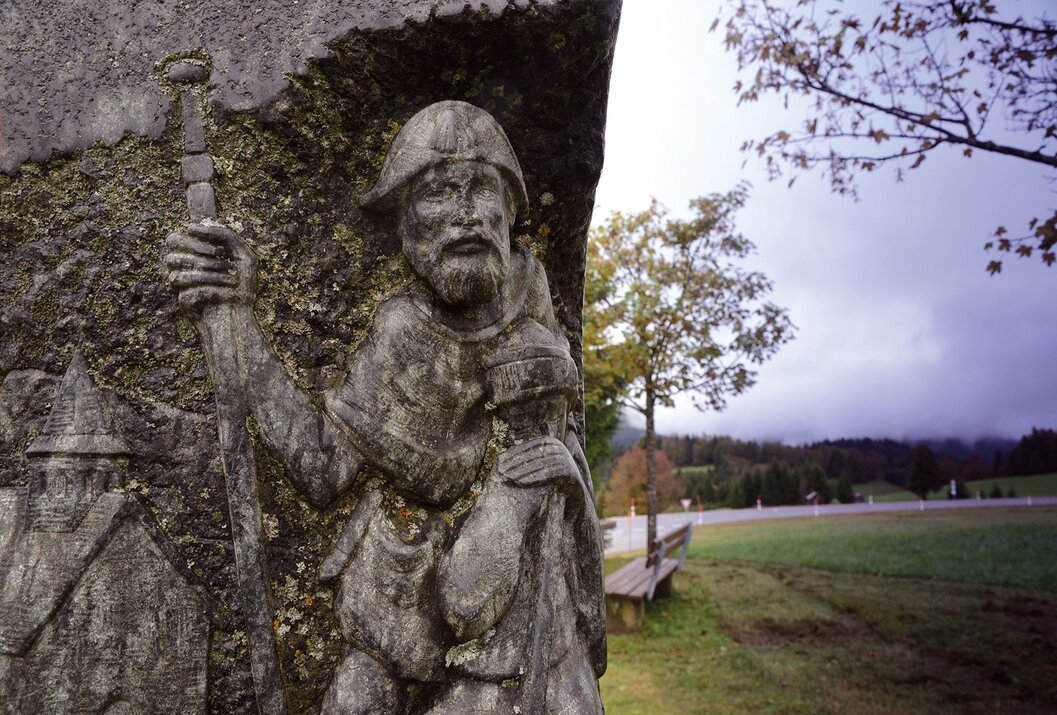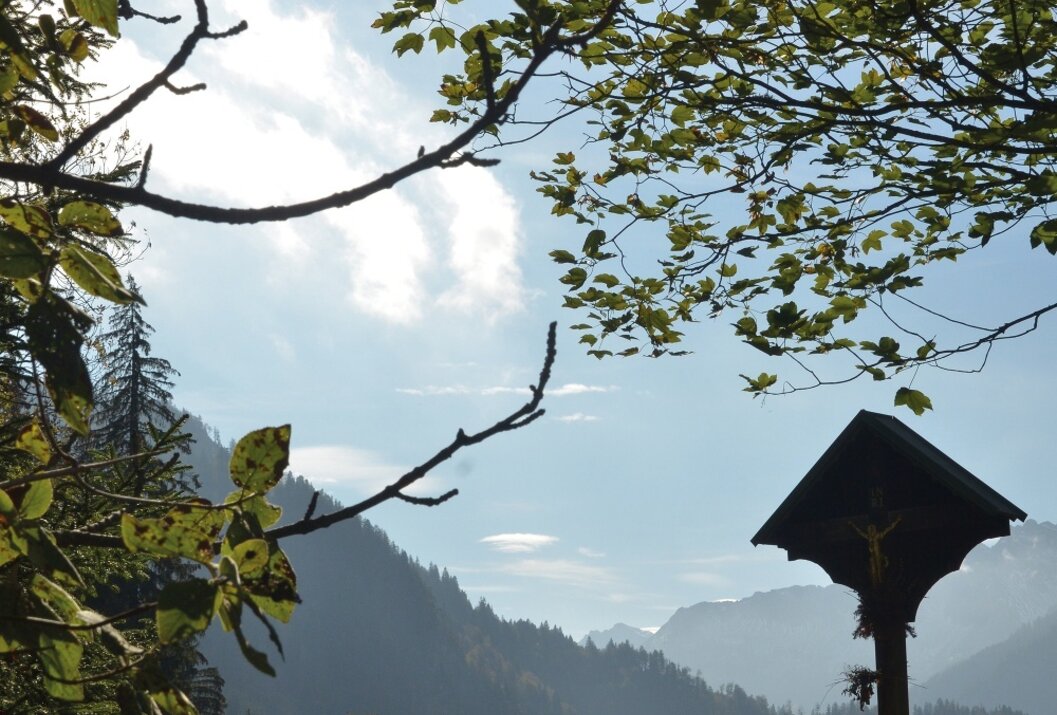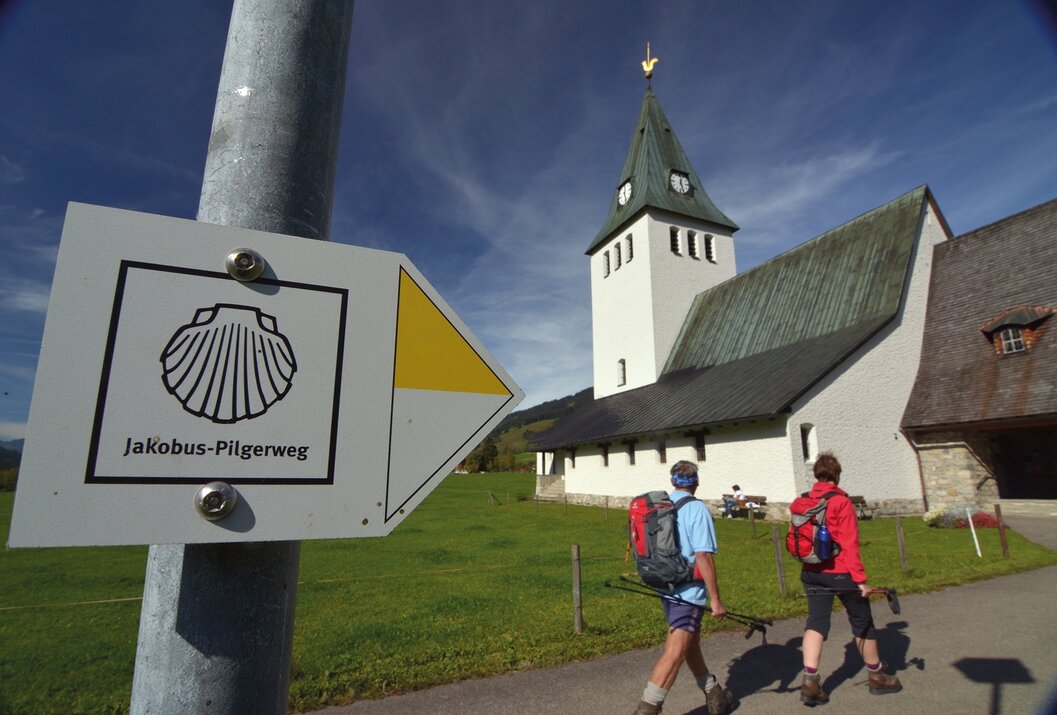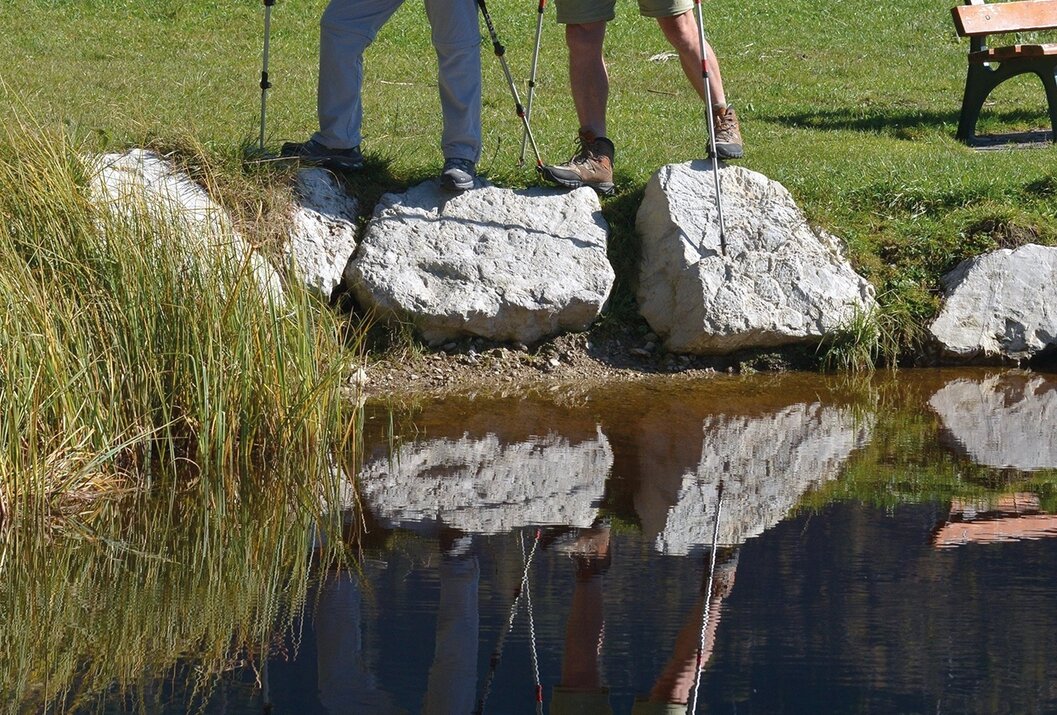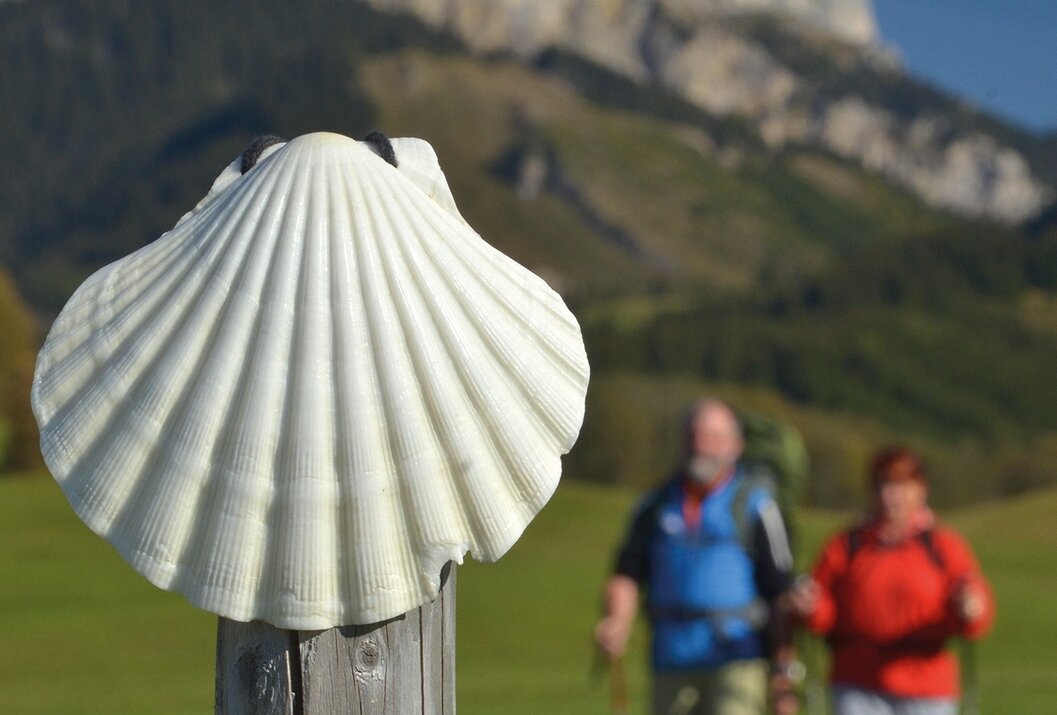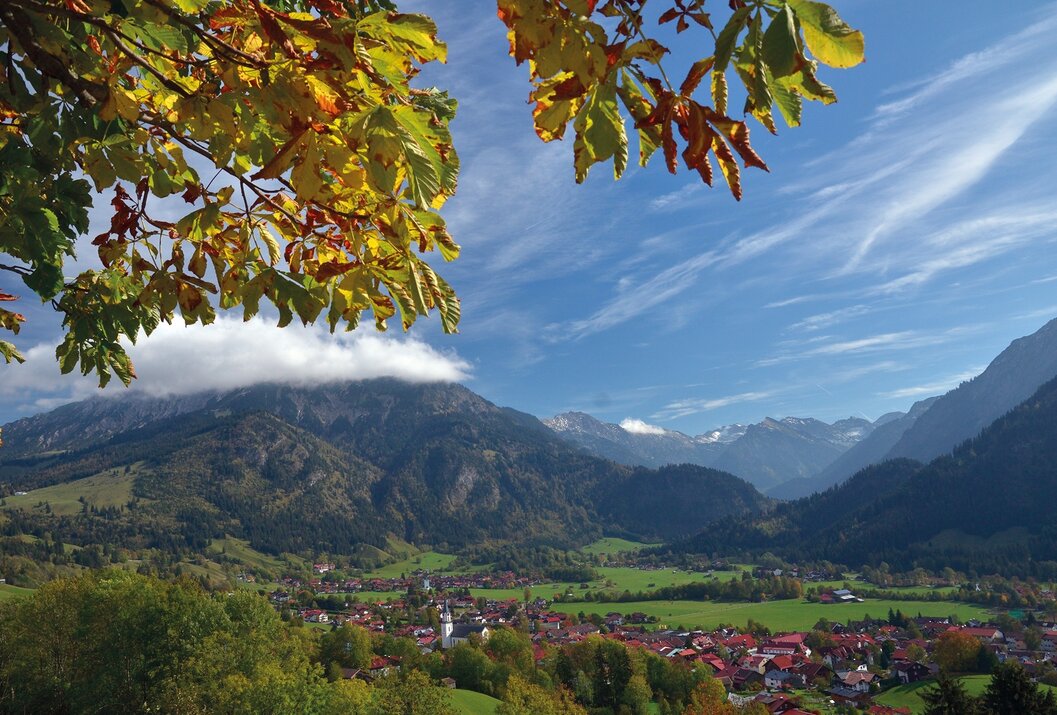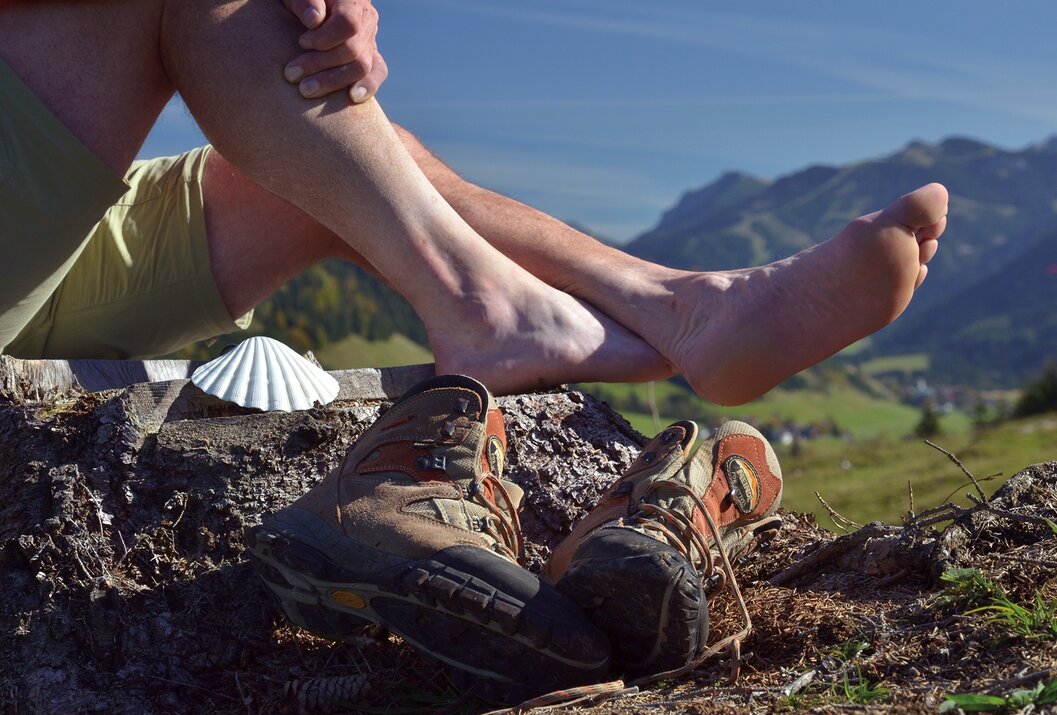Jakobsweg stage 5 Haldensee - Bad Hindelang
Information & interesting facts
The vast Tannheimer Tal between steep rock teeth and mountain ridges forms the Tyrolean final stage. The German part begins in Oberjoch with a spectacular descent to Bad Hindelang, one of the most attractive spa and holiday towns in the Allgäu.
Recommended season:
- June
- July
- August
- September
- Multi-stage route
- Scenic
- Refreshment stops available
- Cultural/historical value
- Geological highlights
- Botanical highlights
- Faunistic highlights
The Jakobsweg Tyrol-Allgäu
This alpine Jakobsweg route, which is very attractive both scenically and culturally, leads away from the main roads over three alpine passes, namely the Fernpass, the old Gaichtpass, and the Jochpass. It passes through some of the most attractive hiking and holiday areas of Tyrol and southern Upper Allgäu on ancient Roman, trade, and pilgrim paths.
Pilgrims on the Jakobsweg can undoubtedly look forward to a particularly impressive route. Even more so as it mostly leads through rural-tranquil mountain regions, where people were deeply shaped for centuries by faith and fear of the forces of nature. Therefore, these regions are particularly rich in churches and chapels with numerous art-historical gems from very different epochs. Together with the magnificent panoramic views, the constantly changing perspectives, and the meditative, sometimes strenuous hiking in wind and weather through these alpine natural landscapes, this "camino" becomes a path engaging all the senses, unforgettable, rich in intense experiences, encounters, insights, and perhaps new self-discoveries.
Integration into the Jakobweg network of Austria and Germany
The Jakobsweg Tyrol-Allgäu connects in Stams to the German-Austrian Jakobsweg from Munich along the Isar, Loisach, Leutascher Ache, and Inn, as well as to the two Austrian Jakobswegs which meet in Innsbruck: the route from Lofer/Salzburg to Innsbruck and the route from Lienz to Innsbruck. From Innsbruck, this consolidated Jakobsweg corridor continues via Stams to the Arlberg or from Stams onto the Tyrol-Allgäu route.
Pilgrim stamps and pilgrim passport
In the Jakob chapels and the churches named in the text, there are stamp points along the Jakobsweg. These pilgrim stamps are lovely souvenirs in your own pilgrim diary. They serve as proof of the completed route in the internationally recognized pilgrim passport. The pilgrim passport also allows as an official document the overnight stay in special pilgrim accommodations, though there are still few on this route. It can be obtained for a processing fee from the Jakob pilgrim communities.
From the Jakob chapel, keeping right through meadows to the parish church of St. Wendelin in Grän (1138 m), consecrated in 1793 in honor of the patron saint of shepherds and livestock, Wendelin. Continuing along a chapel- and wayside shrine-rich path to Innergschwend with the St. Martin chapel (first mentioned in 1494) and to Berg with the magnificently stuccoed St. Sebastian chapel (1653). A visit to Tannheim is a must because of the baroque St. Nicholas church, the second largest rural parish church in the Diocese of Innsbruck, and due to the charming village. St. Nicholas surprises with imposing altars and ceiling frescoes as well as with the valuable, over 450 years old complete bell set from the famous Innsbruck bell foundry Löffler. The best round trip is from Berg on a quiet path to the underpass at the parking lot at the entrance to Tannheim. Then on the enchanting panorama path over Untergschwend to the plague chapel of St. Leonhard in Kienzen, through Zöblen, Fricken and Kappl. Crossing the Vils bridge, one reaches Schattwald department store Lutz, on the federal highway to Oberjoch. Behind this, a road leads right from the pass road in the direction of Steig, Unterjoch/Krummenbach. On this, keep left to the fork with a wayside cross and bench in front of a farm. Follow the signs "Jakobsweg/Old Salt Road" and climb steeply up to the federal road 308, which you cross to the hiking trail to Oberjoch (1145 m), the highest district of Bad Hindelang. Passing the old border station (with a toll station) above, go directly to Oberjoch at the Joch pass. On the way there is a large memorial stone at a rest area reminding of the Roman road (scientifically refuted), the old salt road and the Jakobsweg. Below the Catholic parish church of the Holy Spirit (1968/69) stands the St. Jakob Chapel (stamp point) (1732) with a stamp point and beautiful ceiling fresco of pilgrims at the fountain on the pass road. The Jakobsweg leads from the info point at the Joch initially toward Untere Ochsenalpe, then turns right into the forest to the Wildbachtobel and descends steeply through the meadows with a magnificent view. On the old Joch pass trail, you reach the first houses of Bad Oberdorf, from where, after crossing the main road, you come directly to the filial church of Bad Oberdorf, St. Jodokus. The church, built in 1938, is widely known for its art treasures, such as the donkey carrying palms (around 1470), the Marian painting by Hans Holbein the Elder, and the altar by Jörg Lederer.
Tip:Felixé Mina's house, local history museum, Vilsalpsee in Tannheim. Parish church St. Wolfgang (stamp point) in Schattwald. Moor spa and guesthouse of the Alpe Kematsried in Oberjoch. Upper mill in Bad Oberdorf.
Safety guidelines:It should be noted that there is an increased risk of accidents and injuries on pilgrim paths. Despite careful route planning, there is always a basic risk. Preparing the route through endurance sports, appropriate technical training, and mental preparation reduces the risk of accidents and other dangers. But please never forget that weather in the mountains can change very quickly.Equipment:
Personal pilgrim equipment must be safe and functional and meet the current technical standards. The backpack should not exceed a weight of 15 kg. Every pilgrim is recommended to inform and prepare themselves thoroughly using specialist literature or the internet.
Toll-free on the A7 Kempten-Reutte to exit Oy-Mittelberg. On B310 to Oberjoch and on B308 into the Tannheimer Tal. Or A980 to exit Waltenhofen and on B19 to Sonthofen. Continue on B308 via Bad Hindelang and Oberjoch. From the direction of Fernpass/Reutte fastest on A7 to exit Oy-Mittelberg, on B310 to Oberjoch, on B308 into the Tannheimer Tal.
Public Transit
Arrival via the easily accessible station Sonthofen. Continue by bus via Bad Hindelang and Oberjoch into the Tannheimer Tal. Also arrival in summer by train and bus via the stations of the Außerfernbahn Kempten-Reutte: from the station Pfronten-Ried 16 km to Grän and from station Reutte 24 km through the Lech valley over the Gaichtpass. Bus timetables and travel tips at: www.vvt.at (Tyrol), www.rva.de (area Füssen/Pfronten and Oberstdorf) as well as on www.tannheimertal.com .
Parking
In Grän at the community hall - fee required
Jakobsweg stage 5 Haldensee - Bad Hindelang
Informationsbüro Tannheim
Vilsalpseestraße 1
6675 Tannheim
